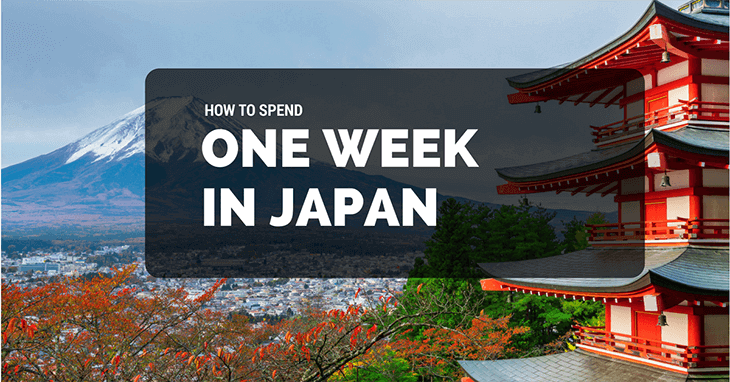If you’re planning to spend one week in Japan, then read on as we show you what you can do in Japan, as well as the details you need when visiting.
How many days are needed in Tokyo?
It really depends on your interests and what you want to do in Tokyo. However, many people find that 3-7 days is a good amount of time to explore the city and experience its many attractions, such as visiting temples and shrines, trying local food, shopping, and taking in the vibrant nightlife.
Is One Week in Tokyo Japan Enough?
You’re probably wondering about the length of your stay. Is it long enough to see everything you need to see in Japan, or do you require more time?
It depends on what you want to see. Of course, you won’t be able to see the whole of Japan in one week, but you’ll also be able to experience a LOT of things while you’re in the country.
The basic answer is YES, a week in Japan is enough, as long as you plan smart and create an itinerary that gives you ample time to view everything and commute wisely. This is where the traveling guide to Japan comes to help!
Where to stay in Tokyo for one week?
If you’re wondering where to stay and go around in Japan, we recommend Tokyo, more specifically Shinjuku. This is central of Tokyo is the best area to stay in Japan for one week, where everything is in the middle, and you can easily access places.
| 💖 Best places to stay in Tokyo for a week: | Shinjuku |
| 💎 Best luxury hotel: | Park Hyatt Tokyo |
| 🏨 Best mid-range hotel: | Hotel Sunroute Plaza Shinjuku |
| 💰 Best budget hotel: | Nishitetsu Inn Shinjuku |
See more: Where to stay in Shinjuku
How Much Money for One Week in Tokyo Japan?
Take note that 1 US Dollar is equivalent to around 110 Japanese Yen. The average prices of lodging, food, and transportation are fair enough, with food usually ranging between 700 to 3000 Japanese Yen per person, depending on where you eat.
Entry fees to museums or other historical attractions cost only 500 Japanese Yen, equivalent to 5 US Dollars.
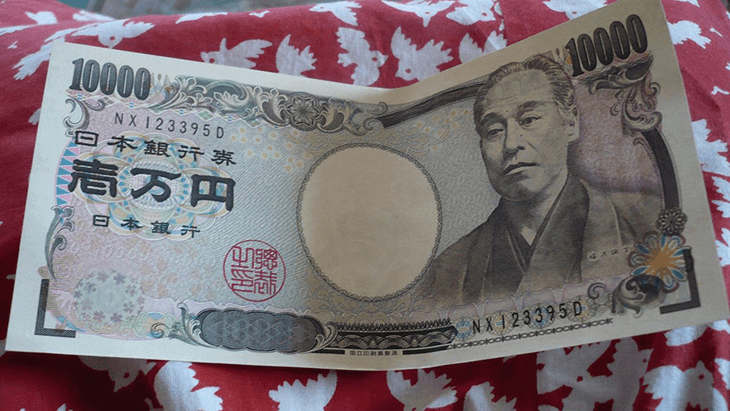
As for transportation, a one-day subway pass is 600 Japanese Yen, while a taxi ride around the city can cost about 2,500 Japanese Yen.
If you have the budget and would like to splurge, a week in Japan would cut you back around 100,000 Japanese Yen (including a hotel room for a week, which is 10,000 Japanese Yen on average), or about 1,000 US Dollars.
If you are with the family, then you will need to increase the cost of food, transportation, tourist fees and other miscellaneous expenses, setting you back to around 35,000 Japanese Yen, or around 300 US Dollars.
Solo backpacking is great since you have the choice to choose a hotel or dorm or to go on budget meals to save money. A dorm bed costs 3,000 Japanese Yen a night, with meals costing around 800 to 1,000 Japanese Yen. A week in Japan for a solo backpacker can cost around 49,000 Yen or about 450 US Dollars.
We would recommend you to bring 500 US Dollars for solo backpackers on a budget, or 1,500 US Dollars for a family of four. It will all depend on how luxurious you want your room or lifestyle to be while you are in Japan.
What to Do for One Week in Tokyo Japan?
Depending on the season and weather you arrive in, there are tons of things to do in Japan. The first thing to do is to go sightseeing. Only walking around, you’ll be able to take in the culture and explore what Japan has to offer, from the temples you can visit the food you can eat.
Fortunately, many attractions are free to enter, as well as a ton of food stands that offer cheap but delicious food. When in another country, the two most important things to do would be to walk and learn, then eat what the locals eat!
There are also a lot of outdoor activities you can do, such as climbing or attending events, meeting locals or tourists as you go on walking tours and other local festivals (if you schedules your trip around events in Japan). This is great if you’re a solo backpacker because you get to enjoy a pint of beer and loosening up to other people!
Another thing would be searching markets and local shops for some souvenirs and memorabilia to bring back home to loved ones. You can find a lot of markets and stores that offer authentic Japanese souvenirs as well.
How to Spend One Week in Tokyo Japan? Itinerary 7 Days
See Also:
- Where to stay in Japan first time
- Where To Stay in Tokyo first time
- Where to Stay in Tokyo with Family
- Where to stay in Tokyo on a budget
- How to Spend 2 Weeks in Japan
- How to Say Hello in Japanese?
- Where to stay in Osaka first time
- Where to Stay in Yokohama first time
Here is a great itinerary to follow that suits anyone’s budget.
Day 1: Airport Arrival and Shinjuku area (Piss Alley, Robot Restaurant, Kabukicho, Gyoen Garden)

You now arrived at the airport. There are two airports, Narita Airport and Haneda Airport. To get from Haneda Airport to Shinjuku, you can use the Airport Limousine Bus. To get from Narita Airport to Shinjuku, take the Narita Express train or the Narita Airport Limousine Bus.
You can choose to take a cab or a bus to go to your hotel. Personally, Shinjuku is a strategic place with many hotels available.
Once you’ve arrived at the hotel and checked in, you can either rest or head on outside. You can explore the area near your hotel including Piss Alley, Robot Restaurant, Kabukicho, Gyoen Garden.
Shinjuku is an entertainment and shopping district around Shinjuku Station. Shinjuku Station is one of the busiest railway stations in the world. It’s home to many subway and railway lines including Yamanote Line, the important Tokyo loop line.
West of Shinjuku Station is the skyscraper district. You will find the tallest buildings in Tokyo such as the Tokyo Metropolitan Government Building.This building has observation decks on the 45th floors where you can visit for free and enjoy the extensive views of the city. Mode Gakuen Cocoon Towers is also the most recognized icon of Shinjuku.
The tiny smokey alley Omoide Yokocho (also known as Memory Lane/ Piss Alley) is lined with many small Izakaya pubs, red lanterns. It’s a good place to grab a drink and take photos.
In the east side of Shinjuku train station, you will find Robot Restaurant, Golden Gai district, the red-light district Kabukicho, Shinjuku Gyoen Garden, and some history and cultural attractions such as Tokyo Toy Museum, Fire Museum, and Hanazono-jinja Shrine.
The Robot Restaurant is located in the heart of Shinjuku red light district. It offers four daily shows with robots and dancers with neon lights and music.
The entertainment red-light district Kabukicho is home to hundreds of restaurants, bars, and nightclubs. It’s also at its most charming at night when colourful neon lights are lit up on the street.
You can aslo hop in some bars in the tiny Golden Gai nearby to explore more about drinking and underground culture in Tokyo. Joining a bar hopping tour is a good idea to enjoy the nightlife.
The Shinjuku Gyoen Garden is the most beautiful garden in Tokyo, one of the most popular spots for hanami (cherry blossom viewing) picnic in the spring.
If you love history, there are several museums such as the Samurai Museum, Yayoi Kusama Museum.
For shopping, head to Takashimaya Times Square, Shinjuku West Exit Camera Town, Odakyu Department Store, Kinokuniya, Tokyu Hands Shinjuku, and Isetan Department Store.
Other attractions in Shinjuku are Takadanobaba – popular with students and home to several good Ramen restaurants, Shin Okubo – the largest Korean town in Tokyo.
See more: 42 Best Things To Do In Tokyo, Japan
Day 2: Harajuku, Omotesando, and Shibuya
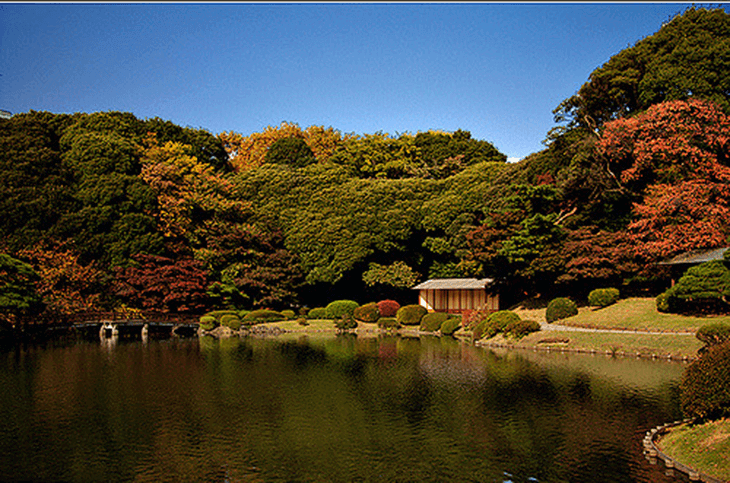
Harajuku and Omotesando with Takeshita Dori, Meiji Shrine, and Yoyogi Park
Harajuku is the area around Harajuku Station, between Shibuya and Shinjuku on the Yamanote Line. There’re plenty of things to do in this area from sightseeing at Meiji Shrine, Yoyogi Park to shopping at Omotesando.
Takeshita Dori street is the longest shopping street in Harajuku which is lined by many fashion boutiques, used clothes stores, trendy shops, fast food outlets that serve teenage cultures and fashion styles.
Located nearby Takeshita Dori is the half-mile long street, Cat Street. This hipster neighborhood is packed with vintage shops, upmarket boutiques, and high-end international brands.
Also known as Tokyo’s Champs-Elysees, Omotesando is also a very good spot for shopping south of Takeshita Dori. It’s home to Omotesando Hills complex and Kiddy Land.
Meiji Shrine is a famous shrine in Japan, and attracts thousands of people each year who come to pray on New Year’s Day. The highlight of the Meiji Jingu Shrine is the giant wooden torii gate, the biggest of its kind in Japan.
Located next to Meiji Shrine is the 54.1 hectares, Yoyogi Park. It’s home to Yoyogi National Stadium, and a good area to just relax, take a stroll,and have picnics.
There are also some art galleries and museums like Moshi Moshi Box Harajuku Information Center, Watari Museum of Contemporary Art/Watari Um, Nezu Museum, and Ukiyo-e Ota Memorial Art Museum.
Shibuya with Shibuya Crossing, Hachiko Statue, Beer Museum Yebisu
See more: Where to stay in Shibuya
Shibuya is the most energetic district in Tokyo and the center of young generations. It is packed with shopping, dining, and nightclubs.
Shibuya Station is the transport hub on the Yamanote Line. When you walk out of Hachiko Exit of JR Shibuya Station, you will be surrounded with restaurants, izakaya, clubs, bars.
The most prominent landmark of Shibuya is Shibuya Crossing, the busiest pedestrian crossing in the world and a popular location in movies such as Fast and the Furious: Tokyo Drift and Lost in Translation.
Shibuya Crossing is a popular photography area for tourists. The best spots for view and photograph Shibuya Crossing are Mag’s Park, Shibuya Sky (Shibuya Scramble Square), Starbucks (Shibuya Tsutaya), Inside Shibuya Station, L’occitane Cafe, and Shibuya Crossing itself .
Located right off the Scramble Crossing is the Shibuya Center Gai Street, a good area for shopping and dining.
Hachiko Statue is the famous statue in front of the station. Hachiko is a loyal dog, who waited for his master every day at Shibuya Station, even after his master passed away. Hachiko Statue is one of the popular meeting points in the city.
If you like history and culture, you must visit the Bunkamura Museum of Art and the Toguri Museum of Art, Beer Museum Yebisu, and the Tokyo Photographic Art Museum.
Roppongi and Akasaka with Mori Tower and Midtown Tower
Roppongi and the surrounding area of Akada are vibrant nightlife districts, popular with foreigners, expats, and businessmen.
In the center of Roppongi is the shopping, dining, and entertainment complex, Roppongi Hills. It has a SkyDeck rooftop, Tokyo City View observation deck on the 238 meter tall Mori Tower, and a Tsutaya bookstore.
Similar to Roppongi Hills, Tokyo Midtown is more upscale. Midtown Tower is 248 meter high, and was the tallest building in Tokyo until 2014. You can access Tokyo Midtown directly from Roppongi Station.
For cultures and history you can visit Roppongi Art Triangle including Suntory Museum of Art, Mori Art Museum, The National Art Center Tokyo. You can use Triangle Pass to visit these museums.
Nearby Roppongi you can visit the 333 meters high Tokyo Tower, taller than its model the Eiffel Tower.
Day 3: Day trips to Mount Fuji and Hakone
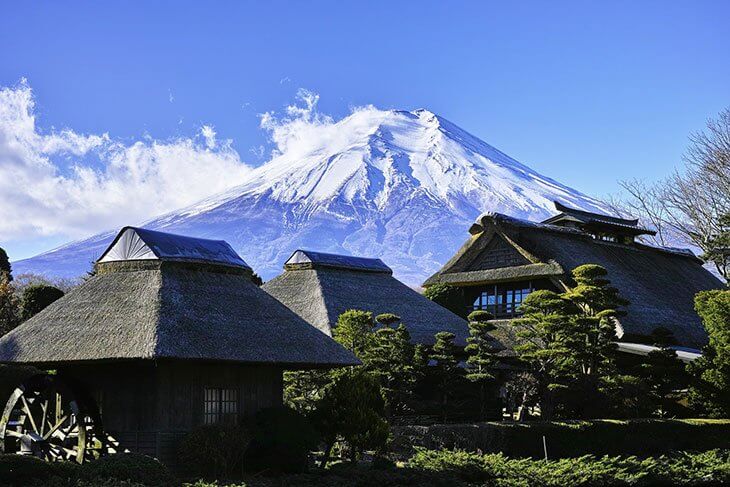
Using the bus, go to the Gotemba Bus Interchange and get dropped off the Gotemba Peace Park (Heiwa Park), where you can find the best views of Mount Fuji.
Have lunch in the Gora Station and use a Hakone Free Pass to try the cable car and tram ride. You can even go on a pirate ship cruise! You can use Hakone Free Pass for a combination of tram ride Hakone Cable Car, Lake Ashi pirate ship cruise, and cable car Hakone Ropeway. Top attractions are Lake Ashi, Picasso Museum, Botanic Gardens, Open Air Museum, and Mount Fuji.
Go back to your hotel using a train (take note, it’s a 2-hour trip).
Day 4: Imperial Palace Area, Ginza, Tsukiji, Tokyo Station
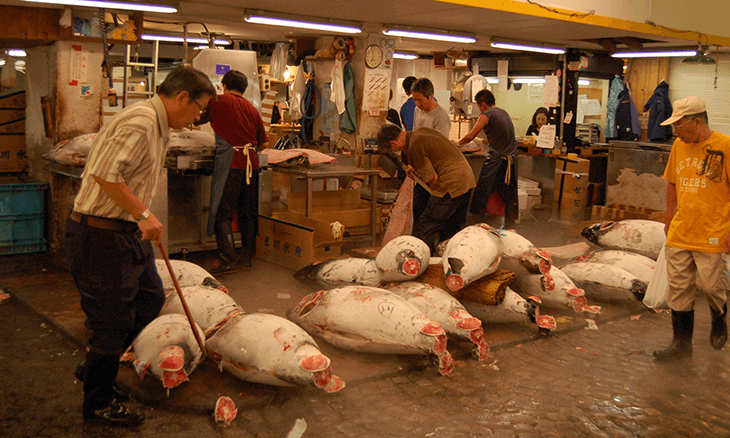
The shopping district Ginza is a neighbor of Tokyo Station and the Imperial Palace. It is filled with luxury boutiques, chic cafes, restaurants and bars, and department stores.
This high-end shopping haven is home to Chuo-dori Shopping Street, Harumi-dori Shopping Street, Kabukiza theatre and Ginza Graphic Gallery.
Chuo-dori Shopping Street is the main shopping avenue in Ginza, home to Mitsukoshi and Wako department stores. It’s a pedestrian area on weekends.
Harumi-dori Shopping Street is another shopping street with many shops and cafes. Some shopping malls you can find in Ginza are Ginza SIX, Ginza Wako, and Ginza Mitsukoshi.
The famous Tsukiji Fish Market has now moved to Toyosu. It’s now the busy market on the site of the old Tsukiji fish market.
Within a short walk from Tokyo Station, you will find the Imperial Palace. The Imperial Palace is close to the public and only open on the Emperor’s birthday 23 December, and the New Year’s greeting on 2 January. If you want to take a tour, you can book it via the Imperial Household Agency.
You can do sightseeing around the Imperial Palace such as the Imperial Palace East Garden, and take photos at Nijubashi Bridge.
Other attractions nearby are Yasukuni-jinja Shrine, Yushukan Museum, Kitanomaru-koen Park, Koishikawa Koraku-en Garden, Showa-kan Museum, Zenkoku-ji Buddhist Temple, Hibiya-koen Park, and JCII Camera Museum.
Day 5: North Tokyo: Asakusa, Akihabara & Ueno
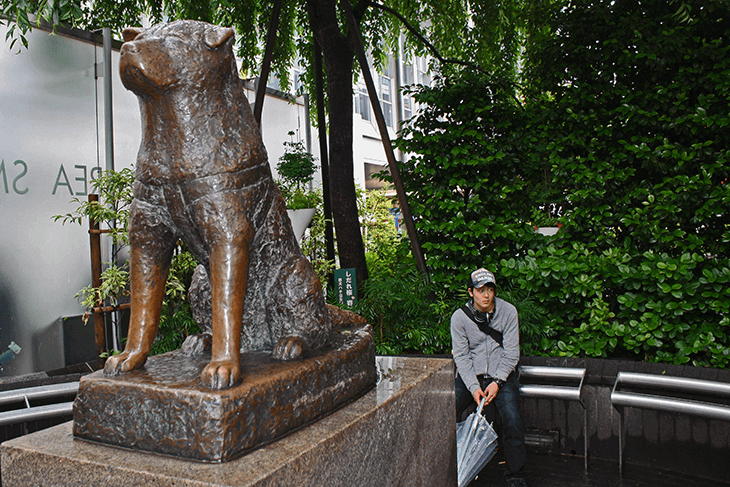
Asakusa with Sensoji Buddhist temple, Sky Tree
Asakusa is home to the famous Sensoji Buddhist temple, and nearby Ryogoku is home to the Sky Tree, the National Sumo Stadium Kokugikan, and the Edo-Tokyo Museum.
Sensoji temple (Asakusa Kannon Temple) is a 7th century Buddhist temple with entrance gates Kaminarimon (Kaminari Gate), the symbol of Asuka.
The Nakamise shopping street stretches from Kaminarimon to the main grounds of Sensoji Temple. You can buy local specialties and tourist souvenirs.
The Tokyo Sky Tree observation tower was the world’s tallest building. Tokyo Sky Tree has two observation decks which offer a panoramic view of the city, and home to a large shopping complex with an aquarium, Sumida Aquarium. You can easily access the tower by the Toei Asakusa Line and Hanzomon Line.
To have a great view of the Tokyo Sky Tree, visit Sumida Park nearby. Along the Sumidagawa River, this Riverside park is just a few minutes walk from Asakusa Station. It is home to the annual Fireworks Festival. It’s a good spot for cherry blossoms (sakura) viewing in the spring.
Edo-Tokyo Museum is located close to the Sumida River. Visit the Edo-Tokyo Museum to learn more about the history of the Edo period. The Nihonbashi Bridge is a full-scale replica of the original wooden bridge.
If you like sumo matches or you are already at the Edo-Tokyo Museum, pay a visit to National Sumo Stadium Kokugikan.
Akihabara with Electronics Town and maid cafes
Akihabara (Akiba) is a center of otaku (geek) culture, and famous for its many electronics shops, maid cafes, manga, anime goods. The neighbors Kanda is famous for its Shinto shrines and Jimbocho is a bookshop district.
Akihabara is a good spot for shopping and sightseeing due to its convenient location, easy access to Ueno and Narita Airport.
For game lovers, you can visit the Arcades and Game Centers, Akihabara Gamers Main Store, The Akihabara Gachapon Kaikan (Akihabara Capsule Toy Center), and Final Fantasy Eorzea Cafe.
The Akihabara Electronics Town and Akiba Denki-gai is a cheap electronics paradise where you can find almost everything from laptops, headphones, cameras, to anime and manga goods. Here you will find Chuo-dori Street, Yodobashi Camera complex.
Ueno with Ueno-koen Park and museums
Ueno-koen Park is a prominent landmark in the Oeno area, within a short walk from the transport hub of Ueno Station. Ueno-koen Park is a famous spot for hanami cherry blossom parties in Spring.
Ueno-koen Park is home to many excellent museums, the Tokyo National Museum, the National Museum for Western Art, the National Science Museum, and the Tokyo Metropolitan Art Museum. In the Ueno-koen Park, you can also find Shinobazu Pond, Ueno Zoo, and the historic Toshogu Shrine.
Other attractions are Nippori Fabric Town, Ameya Yokocho Arcade, Kyu Iwasaki-teien, and SCAI the Bathhouse.
Day 6: Odaiba, Tokyo bay, and Tokyo Disney
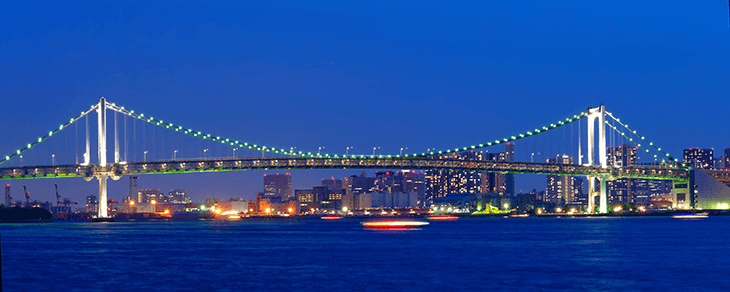
Odaiba (Daiba) is a man-made island in Tokyo Bay. This artificial island of Odaiba and Tokyo Bay are to visit if you are a family traveling with young children and want to visit Tokyo Disney Resort or just to entertain and shop with friends for the weekend.
You can reach Odaiba by:
- the Rinkai line from Ikebukuro, Shinjuku or Shibuya Stations and stop at Tokyo Teleport Station
- the Yurikamome monorail lines from Shimbashi Station getting off at Odaiba Beach Park.
- take the suijo bus (water taxi) from Asakusa.
The best way to explore Odaiba is to buy a day-pass on the Yurikamome monorail line that leaves from Shimbashi station. The Yurikamome line makes a full loop through Odaiba, you can easily visit Odaiba Beach Park, VenusFort, Tokyo Big Sight, and other tourist attractions.
This seaside location attracts thousands of visitors each day with plenty of technology centers, shopping malls, museums, parks, beaches, and many entertainment options with a more relaxed vibe.
From the Rainbow Bridge, the world-famous Fuji TV Building, the Gundam Statue and Statue of Liberty, the Tokyo Big Sight, the Museum of Science and Innovation (MIRAIKAN), there are always some things for you to do.
The most iconic bridge in Tokyo, the 800 meter long Rainbow Bridge connects Odaiba with the other parts of Tokyo. You can walk the bridge for 30 minutes, take a mini-cruise, have dinner and drink while viewing the bridge.
The Statue of Liberty (Symbol Promenade Park) is located in Odaiba Beach Park. It’s a good spot for taking photos with the famous Rainbow Bridge in the background.
If you’re Gundam fans you must visit the Gundam Front Tokyo (DiverCity Tokyo Plaza). It is an entertainment space on the 7th floor of DiverCity.
The Fuji Television Main Building (Fuji Television Headquarters) is located in the Fuji TV main office building, also a must visit.
If you like history, there are several museums for you to explore. The National Museum of Emerging Science and Innovation (Miraikan) to learn more about the latest technology and science. The interactive digital art museum, Mori Building Digital Art Museum Teamlab Borderless, is the most popular and Instagrammable art experience.
For shopping, choose from Aqua City Odaiba, Divercity, Venusfort, And Decks Tokyo Beach. Mediterranean Sea town themed tourist attraction, Aqua City Odaiba is with many shopping stores and restaurants.
VenusFort is located in Palette Town where you can enjoy both shopping and entertainment with Tokyo Leisureland, Megaweb. In Palette Town, you can also find the enormous Ferris wheel with the view of Tokyo Tower, SkyTree, the Rainbow Bridge, and Tokyo Gate Bridge.
Decks Tokyo Beach is a big urban shopping mall where you can find Daiba Kaiki Yashiki, Odaiba Takoyaki Museum, and Tokyo Trick Art Museum.
If you want to break from the shopping, you have a few parks to relax like Odaiba Beach Park, Daiba Park, Aomi Minami Port Park.
Other attractions are the Oedo Onsen Monogatari hot springs near the Telecom Center Observatory, and the Toyosu Fish Market which replaced the old famous Tsukiji Fish Market.
Day 7: Goodbye, Tokyo!
Take the Airport Limousine Bus to the airport. If you are leaving later in the day, you can choose to explore the airport or nearby areas as a goodbye (or, see you later!) to Japan.
Japan is one of the most beautiful places in Asia with a vast history and unique culture. While spending a whole week isn’t enough for you to see everything around Japan, it’s ample time to see what it has to offer. You’ll find that there are a ton of places to visit within budget, and it will be ideal for anyone, may you be alone, with family, or with friends!
Hopefully, this article about one week in Japan helped you create the perfect itinerary suitable for you and your loved ones. So what are you waiting for? Plan your trip to Japan now and save the hassle of looking for things to do last minute.
We hope you enjoyed the article. If you have any more questions or tips for those spending one week in Japan, then comment down below. We’d love to hear what you have to think.

